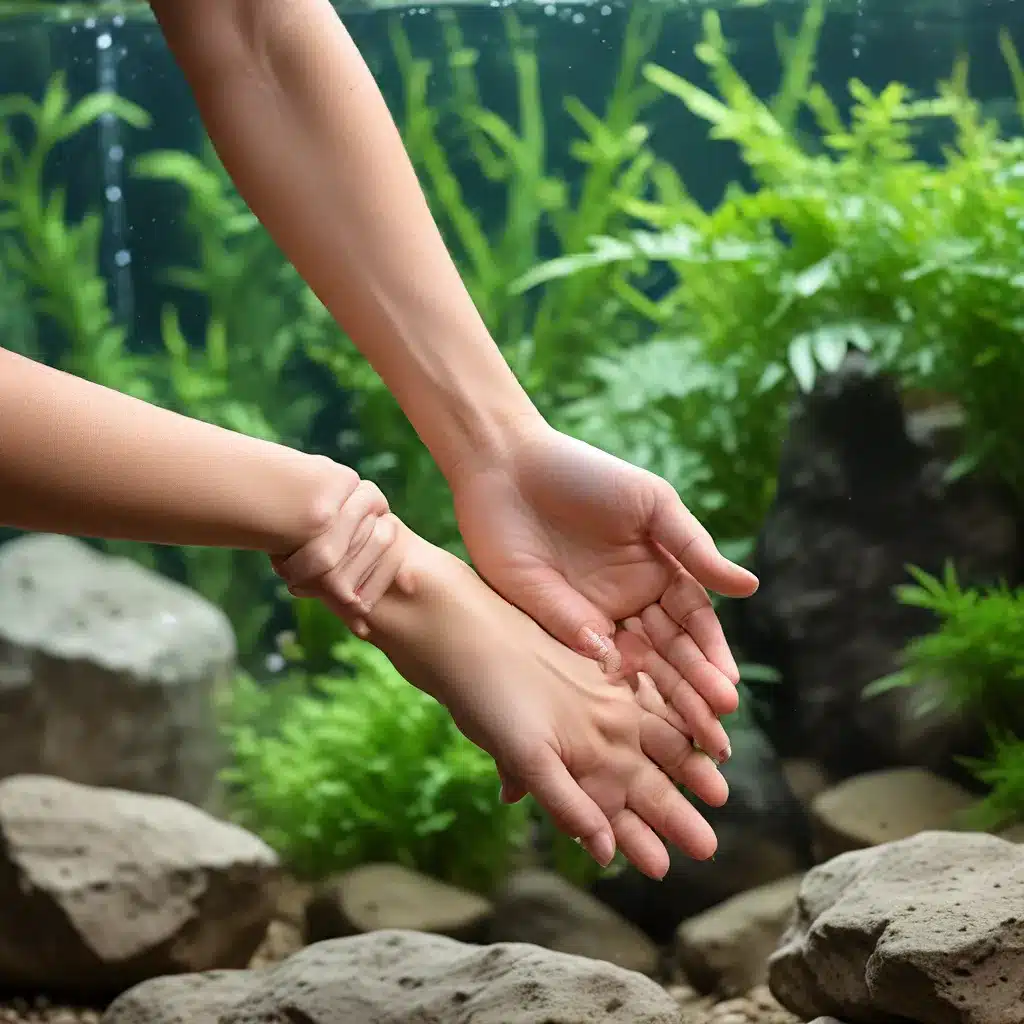
Unlocking the Power of Water Dynamics in Your Aquarium
Maintaining a thriving aquarium ecosystem is a delicate balance of water chemistry, lighting, and aquascaping. One often overlooked yet crucial component is the deliberate control of water movement. Just as acupressure and massage can stimulate the body’s natural healing processes, strategic water circulation can have a profound impact on the health and well-being of your aquatic inhabitants.
In this comprehensive guide, we’ll dive into the nuances of water movement and explore how you can harness its benefits to create a vibrant, low-stress environment for your aquarium inhabitants. Whether you’re a seasoned hobbyist or just starting your aquatic journey, understanding the role of water dynamics can unlock a new level of aquarium success.
The Importance of Gentle Water Movement
In nature, aquatic ecosystems exhibit a delicate balance of water flows, from tranquil backwaters to powerful rapids. Each habitat supports a unique community of fish, plants, and invertebrates adapted to thrive in those specific conditions. Replicating this natural water dynamic in your home aquarium is essential for recreating an environment that caters to the needs of your aquatic life.
Gentle water movement plays a crucial role in several ways:
-
Nutrient and Oxygen Distribution: By gently circulating the water, you ensure that nutrients, dissolved gases, and beneficial bacteria are evenly distributed throughout the aquarium. This promotes the overall health and growth of your plants and animals.
-
Waste Removal: Adequate water movement helps to sweep away uneaten food, waste, and detritus, preventing the buildup of harmful substances that can compromise water quality.
-
Simulating Natural Environments: Many fish and invertebrates thrive in specific water flow conditions, mimicking their natural habitats. Providing the appropriate level of water movement can reduce stress and encourage natural behaviors.
-
Temperature Regulation: Gentle water movement can help distribute heat more evenly, preventing hot or cold spots that can stress sensitive species.
-
Disease Prevention: By maintaining optimal water quality and reducing stagnant areas, gentle water circulation can discourage the growth of harmful bacteria and pathogens.
Choosing the Right Aquarium Equipment
To achieve the optimal level of water movement in your aquarium, you’ll need to carefully select the appropriate equipment. The three primary tools for controlling water flow are:
-
Power Filters: These versatile filters not only provide mechanical and biological filtration but also generate a steady flow of water circulation throughout the tank.
-
Powerheads: Powerheads are dedicated water pumps that can be strategically placed to create targeted water movement in specific areas of the aquarium.
-
Wave Makers: Also known as water circulators, these devices simulate natural wave patterns, creating a gentle but constant flow of water.
When choosing your equipment, consider the size of your aquarium, the specific needs of your livestock, and the desired aesthetic. It’s often a balance of finding the right combination of flow rate, placement, and equipment to achieve the optimal water movement.
Implementing Effective Water Flow Patterns
Once you have the necessary equipment installed, it’s time to optimize the water flow patterns in your aquarium. Here are some strategies to consider:
Layered Water Movement
Create a layered effect by positioning your equipment to generate water movement at different depths. This helps to ensure that the entire water column is circulated, distributing nutrients and oxygenation throughout.
Targeted Circulation
Use powerheads or wave makers to create specific water flow patterns, such as directing the flow towards the substrate or along the aquarium walls. This can help prevent dead spots and ensure even distribution of water parameters.
Adjustable Flow Rates
Many modern aquarium equipment, such as filters and powerheads, offer adjustable flow rates. Take advantage of this feature to fine-tune the water movement to suit the needs of your aquatic inhabitants.
Incorporating Aquascaping
Strategically placing aquascaping elements, such as rocks, driftwood, and plants, can help guide and shape the water flow, creating a more natural-looking and beneficial current.
Monitoring and Adjusting
Regularly observe your aquarium’s water movement and make adjustments as needed. Consider the behavior and needs of your fish, as well as the growth and health of your plants, to ensure the water flow is optimized for your specific setup.
Balancing Water Movement and Aquascaping
While water movement is crucial, it must be balanced with your aquascaping design. Excessive or overly turbulent water flow can disrupt the natural growth patterns of aquatic plants, causing them to become uprooted or struggle to thrive.
When planning your aquascaping layout, take into account the water flow patterns you intend to create. Positioning dense plant groupings or strategically placed hardscape elements can help to channel and diffuse the water movement, creating a harmonious and visually appealing setup.
Conclusion: Harnessing the Power of Aquarium Acupressure
By understanding and implementing the principles of gentle water movement in your aquarium, you can unlock a new level of vitality and balance for your aquatic ecosystem. Just as acupressure and massage can stimulate the body’s natural healing processes, strategic water circulation can have a profound impact on the health and well-being of your aquatic inhabitants.
Experiment with different equipment, flow patterns, and aquascaping techniques to find the perfect balance for your unique aquarium setup. Remember, the key is to mimic the natural water dynamics found in thriving aquatic environments, creating a low-stress, nutrient-rich, and aesthetically pleasing habitat for your beloved aquatic life.

